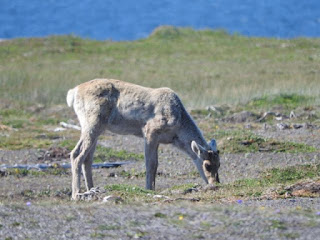Sunday, August 28, 2016
We are in Fort Wayne, Indiana, our last stop before home. Fort Wayne has the third best genealogical library in the country, after the National Archives and the Mormon sources in Salt Lake City, Utah. Someone left their fortune to develop it and it has been put to good use. We’ll spend a day there before heading home.
My sincere sympathies to those of you who have had to endure this heat all summer. I’m not good with heat at the best of times and after spending the summer as far north as we were, I wasn’t ready for this. And, yes, I know that this is actually cooler than it has been. We will head north again next summer.
I also want to remember to stay out of Direct TV satellite range in 4 years. We were far enough north and east that we couldn’t get satellite TV during the conventions. While the Internet kept us informed, I didn’t have to listen to all the talking heads drivel on. Maybe we can plan an overseas trip for that summer.
The last adventure in Canada that I wrote about was coming back from Newfoundland. We accomplished the ferry journey without incident and drove to a nearby campground for the night. Which is where the fun began.
We had supper and then Steve decided to head out and try to make some satellite amateur radio contacts. He’s done a lot of that on this trip and has a nice stable tripod that he can mount his antenna on. What I didn’t realize was that he sometimes doesn’t use that and ends up waving the antenna around in the air by hand to find the satellite. Ok, fine.
But it’s dark and he said he was going out to an overlook. About an hour later he comes rushing back in, grabs two flashlights and says he needs my help. This is not good.
We hop into the truck and he heads back to the “overlook” and explains the problem: while waving his antenna around and trying to broadcast, he set his phone on the truck where he could see the information about where the satellite was. You can see what’s coming. He packed up his antenna and his radio and jumped into the truck and headed back to the trailer. Getting out of the truck he checked for his phone. He doesn’t swear very often.
So back to the overlook we went, which was in reality a wide spot in the road, and we’re hunting for the phone with flashlights. My phone is turned off; we only use one phone in Canada to cut down on international costs. But I turn mine on to call his phone, hoping to hear it ring. Silence (at least when the 18 wheelers weren’t whizzing by). Later I realized that we wouldn’t hear it ring, as it only rings in his hearing aids and was too far away for that.
Panic. But Steve remembered that he had the Find My Phone App on his phone and he used that to locate the phone – about 100 yards down the road from where we were looking. It stayed on the truck way longer than it should have!
Only a few dings on its case and one scratch on the screen. We were very lucky!
Now, stop what you are doing and check your phone. Do you have the Find My Phone App? If not, get it, install it and Google how to use it. You won’t regret it.
Steve won’t be doing any more nighttime beside-the-road satellite communications.
The next day we headed north on our way to Quebec City.
The drive through Nova Scotia and New Brunswick was interesting, as the landscape changed from rocky hills to river valley farmland. Quebec City sits on the St. Lawrence River, which over the millennia has left relatively flat land for farming.
Both last year and this year, as we have traveled around Canada, we have noticed that most signs, directional, informational and advertising, are in at least two languages.
The languages are usually French and English, but in the Yukon were frequently English and a First Nation Language (or occasionally all three).
In New Brunswick, we saw signs that were in English and Gaelic (Scottish) (we think).
So as we are headed toward Quebec, I’m expecting to see signs in French, as that’s the official language in Quebec, with the English below.
Not exactly. Stop sign.
Road sign.
Hmm. Even New Hampshire had a dual language welcome sign when we reached there.
We really enjoyed touring old Quebec, but I’ll leave that for another day.
Take care,
Deb

















































